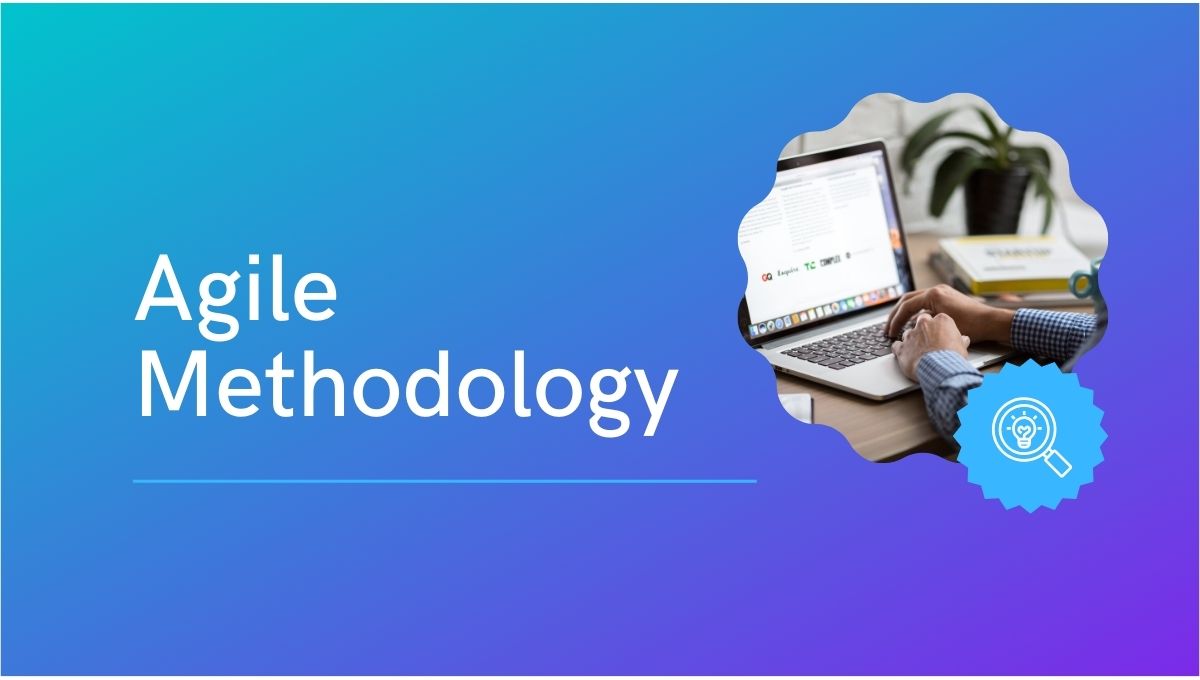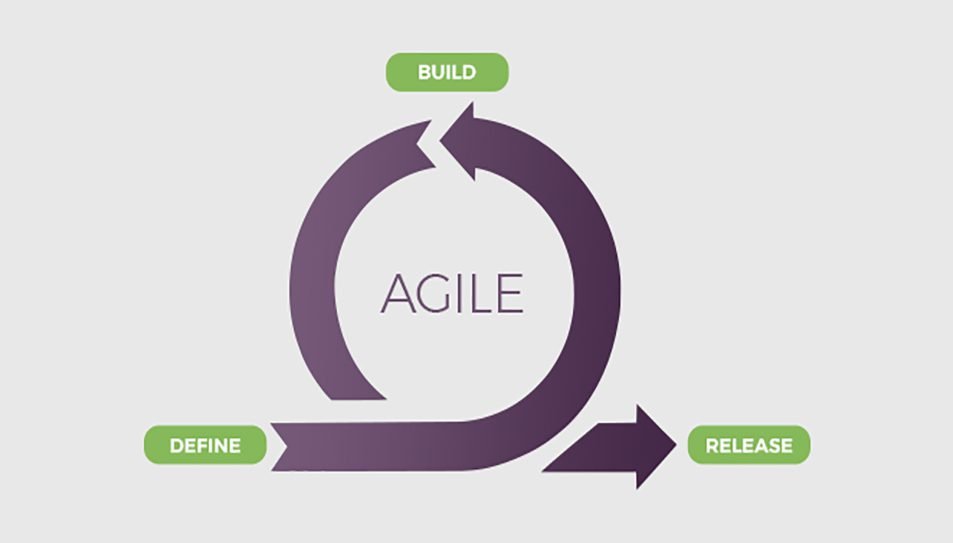Have you ever felt stuck in the rush of change at your job, racing to meet goals that keep shifting? It’s like trying to jump onto a train that’s already speeding down the tracks.
Change, when done the old way, can feel stiff, tough, and far from the real needs of your team. But there is a way to make things flow with ease. Say hello to the world of Agile methodology.
But what is agile methodology? Why is it such a hot topic—from senior execs on a CFO course to young start-up leaders? Agile isn’t just a trend. It’s a clear way of work that values fast shifts, team bonds, and small, steady gains.
So, let’s look at how your firm can bring Agile into your change processes and reap these big wins.
What is Agile Methodology: The Basics Made Clear?
Agile methodology is a way to run projects and build products through short cycles known as “sprints.” It’s based on speed, teamwork, clear talk, and small, constant steps forward.
Agile software development is a broad term covering methods of software creation that follow the values and principles set out by The Agile Alliance, a group of 17 software experts who came together in 2001.
Think of Agile like driving through Mumbai’s busy roads. Would you want fixed, strict routes or live GPS guides? Of course, you’d pick real-time guides to change your route fast based on what’s ahead. The agile methodology process gives you just that: it moves fast and adjusts well to real-life hurdles.
To grasp “what is agile methodology,” know these four core values:
- People and talks more than tools and rules
- Working results in more than full notes.
- Work with clients more than deals and terms.
- Quick response to change more than fixed plans
If you enrol in a CFO course, you’ll find Agile front and centre. It’s key to how firms now manage change and cash flows.
Mixing Agile with Your Current Change Methods
Around 97% of organisations say they use Agile development methods to some degree. Old-school change ways tend to lean on long plans, stacks of documents, and fixed roles. Yes, you need some form of plan, but too much can slow you down. Agile helps blend order with speed.
Here is how you can bring Agile into your ways right now:
1. Clear Talks and Open Chats
Change grows best with clear, open talks. Agile has daily stand-ups and short meets where the whole team shares progress, blocks, and next steps. There’s no guesswork, no stress—just clear facts. This builds trust and binds the team.
2. Take Small Steps at First
Don’t try to change your whole firm overnight. Start small, maybe with one team or one project. This way, small wins build trust and pave the way for more.
3. Ask for Feedback Often
In Agile, teams hold “retros” or quick reviews often. They look at what’s good, what’s bad, and what could change. This helps the team learn and grow fast.
Key steps for agile change management success
| Step in Agile Change Management | Explanation |
| Continuous Feedback Loops | Regular feedback at each step aligns changes with stakeholder and customer needs. |
| Incremental Changes | Changes are generally made in small steps rather than big leaps, reducing risk and easing adoption. |
| Cross-Functional Collaboration | All stakeholders work as one, believing collective effort ensures successful change. |
| Adaptive Planning | Plans are flexible, reviewed often, and updated based on feedback and changing needs. |
| Empowering Teams | Teams take ownership of changes, free to try new ideas, boosting innovation and morale. |
Agile Development Methodology: Steps You Can Use Right Now
You might think, “How do I start with Agile?”
Here’s a clear plan you can use today:
Step 1: Set Clear Goals
Know why you want Agile. Do you seek speed, clear talk, fewer risks, or a stronger team bond? Clear goals keep you on track.
Step 2: Train and Trust Your Teams
Teams need skills and trust to make Agile work. Hold quick, clear training led by those who’ve been there. Share good tales, real wins, and clear tips to bring Agile to life.
Step 3: Build Teams that Work as One
Agile works best when you build teams with skills from all parts of your firm. Drop walls, build bonds, and let people talk and work as one.
Step 4: Run Small Tests First
Pick one small task or project to try Agile first. A pilot helps your team learn without feeling too stressed or swamped.
Step 5: Keep Improving
Agile is not about being perfect. It’s about slow, steady progress. Check your methods often, listen to teams, and always tweak the agile methodology process to fit your needs.
How Agile Methodology Helps You Win
Here’s what you can gain by blending Agile into your change plans:
- Fast Response: Shift fast when things change.
- Happy Stakeholders: Clear, real-time updates boost trust.
- Lower Risks: Small steps mean you spot and fix errors fast.
- More work done: Agile teams often do more faster.
You might think Agile suits just tech or product teams. But it has huge value for finance teams as well. If you take a CFO course, you’ll find Agile makes cash flows, budgets, and forecasts clear and simple. It lets you shift fast in tough times. More CFOs now see the worth of Agile in keeping their firms strong in tough times.
Choose an Agile Development Methodology: A Path to Change
Agile isn’t just a set of rules to follow. It’s a way of thinking—a way that puts teamwork, speed, and growth first.
Know that the agile development methodology won’t look the same in each firm. It must fit your team’s style and your firm’s goals. Take the time to hear your teams, be calm, and keep them in the loop.
In short, Agile gives you a clear, strong, and human way to manage change. By grasping “what is agile methodology,” your firm can move through change with less stress and more joy.
Are you ready to make change at work clear, smooth, and full of life? Take the first step now—your teams and clients will thank you.
Let’s choose Agile and shape the future!
Step into Strategic Finance Leadership with Imarticus Learning & ISB
The Chief Financial Officer Programme from ISB Executive Education and Imarticus Learning provides eight months of development for financial experts moving toward C-level positions.
Online sessions combined with structured, on-campus learning deliver a programme that teaches prospective CFOs essential leadership abilities to predict company directions while they develop strong teams and sustain business advancement in present organisational complexities.
Large segments of the CFO course use actual scenarios to show participants recent breakthroughs in finance, leadership and business strategy concepts. The programme features expertly designed content that helps students transition into C-suite roles through structured learning material that teaches innovation and strategic leadership together with effective change management practices.
The Chief Financial Officer Course provides students with professional skills training but also creates a substantial network of CXO and financial executive professionals from different industries. The flagship programme enables participants to grow their “social net worth” through professional interactions with ambitious leaders who share their leadership goals.
Become part of the ISB CFO Programme through Imarticus Learning to find your position among financial leadership at the highest level. Enrol today.
FAQ
Q1: What is agile methodology?
Agile methodology functions as a responsive team-driven project management system that features a brief succession of planning sessions alongside action stages before conducting reviews to improve outcomes.
Q2: What is the agile methodology process?
Agile methodology performs the process through a system of planning followed by execution and then review before adopting the project. The method relies on ongoing feedback, which drives an ongoing process to improve itself.
Q3: How does agile methodology help in change management?
Using agile development methodology enables teams to make rapid adaptations to change by dividing work into smaller tasks that involve all stakeholders and deliver quick results with minimised risk levels.
Q4: Why should CFOs learn agile methodology?
CFOs lead strategic change. Learning agile helps them act faster, manage finance better, and drive real-time transformation across departments.
Q5: Can agile methodology work for non-tech industries?
Yes, agile works beyond IT. It’s now widely used in finance, education, health, and more to speed up change and boost team collaboration.
Q6: What does a CFO course teach about agile methodology?
A CFO course teaches agile mindset, change strategy, and how to apply agile tools in budgeting, reporting, forecasting, and team leadership.
Q7: Is agile methodology hard for finance professionals to learn?
Not at all. It’s more about mindset than tech. Even with no IT background, finance leaders can master agile with the right guidance.


